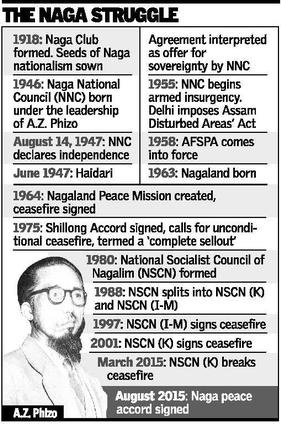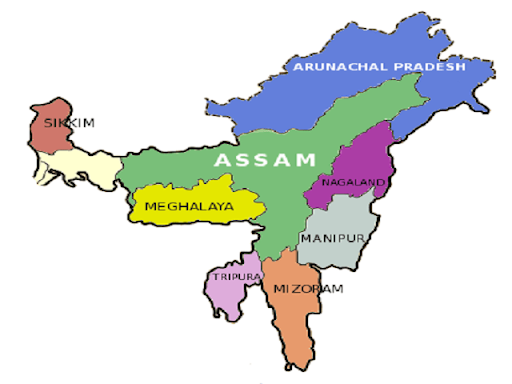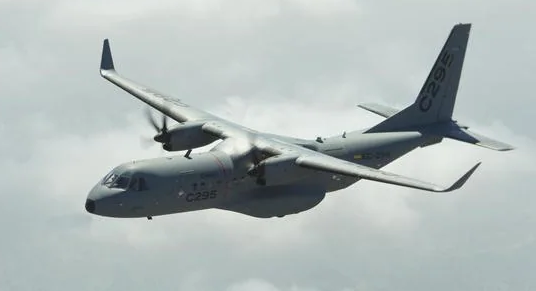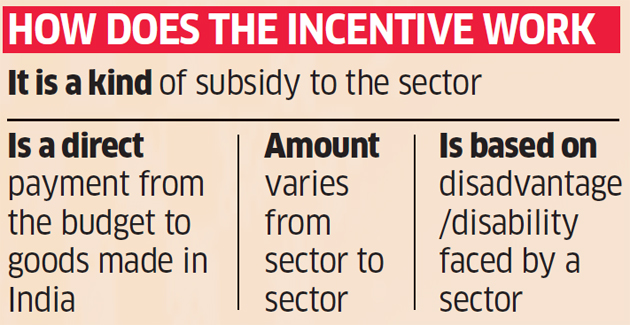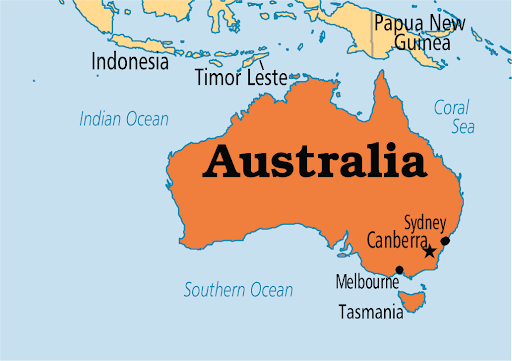Internal Security
Ceasefire With NSCN(K) Niki Group
Why in News
Recently, the Union Government has entered into a Ceasefire Agreement with the National Socialist Council of Nagaland (K) Niki Group for a period of one year.
- This initiative is a significant boost to the Naga peace process and in line with Prime Minister of India's vision of 'insurgency free, prosperous North East'.
Key Points
- Naga Peace Process:
- After India became independent in 1947, the Naga territory initially remained a part of Assam.
- In 1957, after an agreement was reached between Naga leaders and the Indian government, the Naga Hills region of Assam and the Tuensang frontier division to the northeast were brought together under a single unit directly administered by the Indian government.
- Nagaland achieved statehood in 1963, however, rebel activity continued.
- Vision of Insurgency Free, Prosperous North East:
- Recognises that the North East is very important for the country from the aspects of security.
- Thus, the aim is to end all disputes in the Northeast by 2022 and usher in a new era of peace and development in the Northeast in 2023.
- Under this, the Government is enriching the dignity, culture, language, literature and music of the Northeast.
- Over the years, the government has also signed several peace agreements with military outfits in northeast India. For example,
- Karbi Anglong Agreement, 2021: It involved a tripartite agreement signed among five insurgent groups of Assam, the Centre and the state government of Assam.
- Bru Accord, 2020: Under the Bru accord, the permanent settlement of 6959 Bru families in Tripura with a financial package has been agreed between the Government of India, Tripura and Mizoram with representatives of Bru migrants.
- Bodo Peace Accord, 2020: In 2020, the Government of India, Government of Assam and representatives of Bodo groups signed an agreement, wherein more autonomy is provided to Bodoland Territorial Region (BTR), in Assam.
- Peace agreement with various military outfits which are involved in Naga Insurgency like NSCN(NK), NSCN(R), and NSCN(K)-Khango, NSCN(IM).
Conflicts in Northeast India
- Typology of Conflicts:
- National Conflicts: Involving the concept of a distinct ‘homeland’ as a separate nation.
- Nagaland: Naga insurgency originated from the demand of independence.
- Although the demand for independence has majorly subsided, the lingering issue of a final political settlement including the demand for ‘greater Nagaland’ or ‘Nagalim’ remains.
- Nagaland: Naga insurgency originated from the demand of independence.
- Ethnic Conflicts: Involving assertion of numerically smaller and less dominant tribal groups against the political and cultural hold of the dominant tribal group.
- Tripura: The State’s demographic profile has been altered since 1947 when mass migrations from the newly emerged East Pakistan converted it from a largely tribal area to one with a majority of Bengali speaking people.
- Tribals were deprived of their agricultural lands at throw-away prices and driven to the forests.
- The resultant tensions caused major violence and widespread terror.
- Tripura: The State’s demographic profile has been altered since 1947 when mass migrations from the newly emerged East Pakistan converted it from a largely tribal area to one with a majority of Bengali speaking people.
- Sub-regional Conflicts: Involving movements which ask for recognition of sub-regional aspirations and often come in direct conflict with the State Governments or even the autonomous Councils.
- Mizoram: The State with its history of violent insurgency and its subsequent return to peace is an example to all other violence affected States.
- Following an ‘Mizo Peace accord’ between the Union Government and the Mizo National Front in 1986 and conferment of statehood the next year, complete peace and harmony prevails in Mizoram.
- Further, the boundary issue between Assam and Mizoram has existed since the formation of Mizoram.
- Mizoram: The State with its history of violent insurgency and its subsequent return to peace is an example to all other violence affected States.
- Other Reasons: Sponsored terrorism, conflicts generated as a result of continuous inflow of migrants from across the borders, criminal enterprise aimed at expanding and consolidating control over critical economic resources, have also result into clashes.
- Assam: The major ethnic conflict in the State is the grievance against the perceived influx of ‘foreigners’ i.e. people with a language and culture substantially different from the Assamese from across the border (i.e. Bangladesh).
- The recent tension in Assam emanates from the Citizenship (Amendment) Act, 2019 and National Register of Citizens debate.
- Assam: The major ethnic conflict in the State is the grievance against the perceived influx of ‘foreigners’ i.e. people with a language and culture substantially different from the Assamese from across the border (i.e. Bangladesh).
- National Conflicts: Involving the concept of a distinct ‘homeland’ as a separate nation.
- Modes of Conflict Resolution:
- Strengthening security forces/ ‘police action’.
- More local autonomy through mechanisms such as conferment of Statehood, the Sixth Schedule, Special Provisions under PART XXI of the Constitution.
- Negotiations with insurgent outfits.
- Development activities including special economic packages.
Governance
C-295 Aircraft Deal
Why in News
The Cabinet Committee on Security (CCS) has cleared procurement of 56 C-295 MW medium transport aircraft for the Indian Air Force under the Make-in-India initiative in the aerospace sector.
- The C-295MW aircraft will be purchased from Airbus Defence and Space S.A., Spain.
Key Points
- About:
- Capacity:
- The C-295 MW is a transport aircraft of 5-10 tonne capacity with contemporary technology.
- Features:
- It has a rear ramp door for quick reaction and para-dropping of troops and cargo.
- It will be installed with the indigenous Electronic Warfare Suite.
- Replacement:
- It will replace the Indian Air Force’s ageing fleet of Avro-748 planes.
- The Avro-748 planes are a British-origin twin-engine turboprop, military transport and freighter with a 6-tonne freight capacity.
- It will replace the Indian Air Force’s ageing fleet of Avro-748 planes.
- Project Execution:
- Airbus Defence and Space and Tata Advanced Systems Limited (TASL) will jointly execute the project to equip the air force with the new transport aircraft under the Make-in-India initiative in the aerospace sector.
- Airbus will supply the first 16 aircraft in fly away condition while the remaining 40 will be assembled in India by TASL.
- Airbus Defence and Space and Tata Advanced Systems Limited (TASL) will jointly execute the project to equip the air force with the new transport aircraft under the Make-in-India initiative in the aerospace sector.
- Capacity:
- Significance of the Deal:
- Private Sector Participation: This is the first project of its kind in which a military aircraft will be manufactured in India by a private company.
- During the process of manufacturing in India, it is expected that all the suppliers of TATA Consortium who will be involved in special processes will gain and maintain globally recognized National Aerospace and Defence Contractors Accreditation Program (NADCAP) accreditation.
- Boosts Atmanirbhar Bharat Abhiyan: It offers a unique opportunity for the Indian Private Sector to enter into technology intensive and highly competitive aviation Industry.
- This programme is a unique initiative to strengthen indigenous capabilities and boost ‘Make in India’.
- Boost MSMEs: The project will give a boost to the aerospace ecosystem in India wherein several Micro, Small and Medium Enterprises (MSMEs) spread over the country will be involved in manufacturing of parts of the aircraft.
- Reduce Import Dependence: The project will augment domestic aviation manufacturing resulting in reduced import dependence and expected increase in exports.
- A large number of detail parts, sub-assemblies and major component assemblies of aero structure are scheduled to be manufactured in India.
- Employment Generation: The programme will act as a catalyst in employment generation in the aerospace ecosystem of the country.
- It is expected to generate 600 highly skilled jobs directly, over 3000 indirect jobs and an additional 3000 medium skill employment opportunities with more than 42.5 lakh man hours of work within the aerospace and defence sector of India.
- Infra Development: It will involve development of specialized infrastructure in the form of hangars, buildings, aprons and taxiways.
- Before completion of deliveries, ‘D’ Level servicing facility (MRO) for C-295MW aircraft are scheduled to be set up in India.
- It is expected that this facility will act as a regional MRO (Maintenance, Repair and Overhaul) hub for various variants of C-295 aircraft.
- Offset Obligations: Airbus will discharge its offset obligations through direct purchase of eligible products and services from Indian offset partners giving further boost to the economy.
- In simplest terms, the offset is an obligation by an international player to boost India’s domestic defence industry if India is buying defence equipment from it.
- Private Sector Participation: This is the first project of its kind in which a military aircraft will be manufactured in India by a private company.
Note
- National Aerospace and Defense Contractors Accreditation Program (NADCAP) is a worldwide cooperative program of major companies designed to manage a cost-effective consensus approach to special processes and products and provide continual improvement within the aerospace and defense industries.
Indian Economy
Production Linked Incentive (PLI) Scheme for Textiles Sector
Why in News
Recently, the Union cabinet has approved the Production Linked Incentive (PLI) scheme for the textile sector.
- PLI scheme for Textiles is part of the overall announcement of PLI Schemes for 13 sectors made earlier during the Union Budget 2021-22, with an outlay of Rs. 1.97 lakh crore.
- PLI for Textiles along with RoSCTL, RoDTEP and other measures of Government in the sector e.g. providing raw material at competitive prices, skill development etc will herald a new age in textiles manufacturing.
Key Points
- PLI Scheme:
- In order to boost domestic manufacturing and cut down on import bills, the union government in March 2020 introduced a PLI scheme that aims to give companies incentives on incremental sales from products manufactured in domestic units.
- Apart from inviting foreign companies to set shop in India, the scheme also aims to encourage local companies to set up or expand existing manufacturing units.
- The Scheme has also been approved for sectors such as automobiles, pharmaceuticals, IT hardware including laptops, mobile phones & telecom equipment, white goods, chemical cells, food processing, etc.
- Features of PLI for Textile Sector:
- Aims to promote the production of high value Man-Made Fibre (MMF) fabrics, garments and technical textiles.
- Incentives worth Rs 10,683 crore will be provided on production to the sector over a span for 5 years.
- Incentives to eligible producers in two phases:
- First: Any person or company willing to invest a minimum of Rs 300 crore in plant, machinery, equipment and civil works (excluding land and administrative building cost) to produce products of MMF fabrics, garments and products of technical textiles will be eligible to participate.
- Second: Investors willing to spend a minimum of Rs 100 crore under the same conditions (as in the case of the first phase) shall be eligible to apply.
- Expected Benefits:
- Increase in Investment and Employment:
- It will lead to fresh investment of more than Rs.19,000 crore, cumulative turnover of over Rs. 3 lakh crore and additional employment opportunities of more than 7.5 lakh jobs in this sector and several lakhs more for supporting activities.
- The textiles industry predominantly employs women, therefore, the scheme will empower women and increase their participation in the formal economy.
- It will lead to fresh investment of more than Rs.19,000 crore, cumulative turnover of over Rs. 3 lakh crore and additional employment opportunities of more than 7.5 lakh jobs in this sector and several lakhs more for supporting activities.
- Priority to Backward Areas:
- In addition, priority will be given for investment in Aspirational Districts, Tier 3, Tier 4 towns, and rural areas and due to this priority, Industry will be incentivized to move to backward areas.
- This scheme will positively impact especially States like Gujarat, UP, Maharashtra, Tamil Nadu, Punjab, AP, Telangana, Odisha etc.
- In addition, priority will be given for investment in Aspirational Districts, Tier 3, Tier 4 towns, and rural areas and due to this priority, Industry will be incentivized to move to backward areas.
- Increase in Investment and Employment:
Textile Industry
- Textiles & garments industry is a labour intensive sector that employs 45 mn people in India and is second only to the agriculture sector in terms of employment.
- It is one of the oldest industries in the Indian economy, and is a storehouse and carrier of traditional skills, heritage and culture.
- It can be divided into two segments:
- The unorganised sector is small scale and uses traditional tools and methods. It consists of handloom, handicrafts and sericulture (production of silk).
- The organised sector uses modern machinery and techniques and consists of the spinning, apparel and garments segment.
Indian Economy
Renewable Energy & Land Use in India
Why in News
Recently, a report named Renewable Energy and Land Use in India by Mid-Century suggested that careful planning today can maximise the benefits and minimise the costs of India’s history-making energy transition.
- It was released by the Institute for Energy Economics and Financial Analysis (IEEFA) which examines issues related to energy markets, trends and policies.
- It’s mission is to accelerate the transition to a diverse, sustainable and profitable energy economy.
Key Points
- Land-Use for Renewables:
- India will use significant stretches of land by 2050 to install renewable energy generation capacities.
- Around 50,000-75,000 square kilometres of land will be used in 2050 for solar energy generation and for an additional 15,000-20,000 sq km for wind energy projects.
- In India, electricity generation has to compete with alternative uses for land such as agriculture, urbanisation, human habitation and nature conservation, unlike Europe or the US.
- India will use significant stretches of land by 2050 to install renewable energy generation capacities.
- Co-Existence:
- Properly managed renewable generation can co-exist with other land uses, and, unlike coal-based power, it does not fundamentally change land during use or following its ultimate decommissioning.
- Carbon Emission:
- The resulting land cover changes, including indirect effects, will likely cause a net release of carbon up to 50 grams of carbon dioxide per kilowatt-hour (gCO2 / kwh).
- The amount of carbon release will depend on the region, scale of expansion, solar technology efficiency and land management practices at solar parks.
- Effect on Ecosystems:
- Land use for renewable energy may put a pressure on a variety of ecosystems. Generally the terms zero impact areas, barren land, unused land or the official designation of wasteland imply that such areas have no value.
- Open Natural Ecosystems (ONE), classified as wastelands, covered around 10% of India’s land surface.
- The largest stretches are found in Rajasthan, Madhya Pradesh, Maharashtra, Andhra Pradesh and Gujarat.
- However some of these have the “highest densities and diversity of large mammalian fauna” and also support livelihoods of local populations.
- Earlier the Supreme Court directed all power lines of solar power units passing through Great Indian Bustard habitats in Rajasthan and Gujarat to be laid underground - as the overhead transmission lines could threaten the endangered species.
- Land use for renewable energy may put a pressure on a variety of ecosystems. Generally the terms zero impact areas, barren land, unused land or the official designation of wasteland imply that such areas have no value.
- Suggestions:
- Reduce Environmental Damage:
- Optimising the size of land used, its location and impact on human habitation, agriculture and conservation of natural resources to reduce environmental damage.
- Minimizing Land Use:
- Minimising total land-use requirements for renewable energy by promoting offshore wind, rooftop solar and solar on water bodies.
- Land Assessment:
- Identification and assessment of land for renewable generation by limiting undue regional concentration and developing environmental and social standards for rating potential sites.
- Policy makers and planners should exclude ONE with high density habitats when considering location of renewable energy projects.
- Incentivising Agri Voltaics:
- Attention on Indian agri-voltaics sector — securing benefits to farmers and incentivising agri voltaics uptake where crops, soils and conditions are suitable and yields can be maintained or improved.
- Agri voltaics combine the agricultural use of land with the production of electric energy by photovoltaics.
- Attention on Indian agri-voltaics sector — securing benefits to farmers and incentivising agri voltaics uptake where crops, soils and conditions are suitable and yields can be maintained or improved.
- Reduce Environmental Damage:
Governance
Delegation of Financial Powers to Defence Services, 2021 Rules
Why in News
Recently, the Ministry of Defence has released the Delegation of Financial Powers to Defence Services (DFPDS), 2021 rules.
- The primary focus of the enhanced delegation of financial powers is to overcome procedural delays, bring about greater decentralisation and operational efficiency.
- The DFPDS 2021 rules is another big step in defence reforms to strengthen security infrastructure.
Key Points
- Key Highlights of DFPDS 2021:
- Financial Powers Devolved to Field Formations:
- Enhanced the delegation of revenue procurement powers for the Army, Navy and Air Force.
- 10% increase in Delegated Financial Powers of Vice Chiefs of Services.
- Financial powers have also been delegated to new officers among the services, depending on requirements.
- Focus on Operational Preparedness:
- Under the new rules, critical equipment can be hired for short periods as compared to purchases or a long-term lease, which are not only considerably expensive but also take a long time.
- Enhanced delegation of financial powers is to empower Field Commanders and below to procure equipment/war-like stores in a speedy manner for urgent operational necessities and meeting essential sustenance requirements.
- Promoting Ease of Doing Business:
- Up to three times increase in funding related to Indigenisation/R&D to achieve ‘Atmanirbhar Bharat’.
- Financial Powers Devolved to Field Formations:
- Recent Reforms in Defence Sector:
- Creation of Chief of Defence Staff
- Establishment of Department of Military Affairs
- Defence Acquisition Procedure 2020
- Recent Critical Defence Acquisitions: Rafale fighter aircraft, S-400 missile defense system, etc.
- Participation of Women in Armed Forces
- Indigenisation of Defense Technology: LCA Tejas, Project 75, etc.
Indian Economy
Differentiated GST Regime
Why in News
The Goods and Services Tax (GST) Council is likely to consider a ministerial group’s report on introducing a differentiated regime for sectors where tax evasion is very high.
- Tax Evasion is an illegal way to minimize tax liability through fraudulent techniques like deliberate under-statement of taxable income or inflating expenses. It is an unlawful attempt to reduce one's tax burden.
GST Council
- It is a constitutional body (Article 279A) for making recommendations to the Union and State Government on issues related to Goods and Services Tax.
- The GST Council is chaired by the Union Finance Minister and other members are the Union State Minister of Revenue or Finance and Ministers in-charge of Finance or Taxation of all the States.
- It is considered as a federal body where both the centre and the states get due representation.
Key Points
- Background:
- The GST council had earlier constituted a Group of Ministers (GoM) to consider demands of some States to tax the sectors with high tax evasion based on production capacity rather than output (i.e. Special Composition schemes)
- Capacity based tax is based on manufacturing capacity rather than production.
- Some examples of sectors with high tax evasion include brick kilns, sand mining, and gutkha and pan masala production.
- For instance, Rs. 830 crore of evasion was detected at a single pan masala unit earlier in 2021.
- The GST council had earlier constituted a Group of Ministers (GoM) to consider demands of some States to tax the sectors with high tax evasion based on production capacity rather than output (i.e. Special Composition schemes)
- Concerns:
- Capacity based tax goes against the very structure of GST as one of the objectives was to ensure buoyancy in revenues with increase in sales volumes.
- It could also open the floodgates for such demands from other sectors, like textiles.
- In terms of implementation also it will not be easy and it may not even yield the desired result of curbing evasion, the main reason for which is extremely high tax rates.
- Such a shift would be detrimental to the fundamental idea of GST and send out the wrong signal to honest taxpayers. It would introduce added complexity in the GST structure.
- Capacity based tax goes against the very structure of GST as one of the objectives was to ensure buoyancy in revenues with increase in sales volumes.
Way Forward
As the past composition schemes have not been effective in checking evasion, leading to rampant litigation over production capacity disputes between Revenue authorities and producers, the government should check GST evasion using better data analytics and introducing innovative, stringent legal provisions to deter tax avoidance.
Important Facts For Prelims
Panj Piare
Why in News
Recently, a controversy erupted in Punjab over the use of the term “Panj Piare” for political leaders.
Key Points
- Part of Sikh Tradition: The Panj Piare is the term used for the Five Beloved: the men who were initiated into the khalsa (the special group of Sikh warriors) under the leadership of the last of the ten Gurus, Gobind Singh.
- They are deeply revered by Sikhs as symbols of steadfastness and devotion.
- Origin: Guru Gobind Singh established the institution of Panj Piare while founding the Khalsa on the day of Baisakhi in 1699.
- To preserve the culture, Guru Gobind Singh asked for five men willing to surrender their lives for him and the cause. With great reluctance by nearly everyone, eventually, five volunteers stepped forward.
- Guru Gobind Singh himself got baptised from them at the same stage to tell the Sikhs that Panj Piaras have higher authority and decision making power than anyone in the community.
- The original five beloved Panj Piare who played a vital role in shaping Sikh history and defining Sikhism are:
- Bhai Daya Singh (1661 - 1708 CE) from Lahore
- Bhai Dharam Singh (1699 - 1708 CE) from Hastinapur
- Bhai Himmat Singh (1661 - 1705 CE) from Jagannath Puri
- Bhai Muhkam Singh (1663 - 1705 CE) from Dwarka
- Bhai Sahib Singh (1662 - 1705 CE) from Bidar
- Since then, every group of five baptised Sikhs is called Panj Piare and accorded the respect enjoyed by the first five Sikhs.
- Contributions:
- These spiritual warriors vowed not only to fight adversaries on the battlefield but to combat the inner enemy, egoism, with humility through service to humanity and efforts to abolish caste.
- They performed the original Amrit Sanchar (Sikh initiation ceremony), baptizing Guru Gobind Singh and about 80,000 others on the festival of Baisakhi in 1699.
- All five Panj Piare fought beside Guru Gobind Singh and the Khalsa in the siege of Anand Purin and helped the guru to escape from the battle of Chamkaur in December 1704.
- The unanimous decision taken by Panj Piare has to be followed by everyone in the community.
- Akal Takht Jathedar also can’t take any decision unilaterally and every diktat from the Akal Takht has to be signed by all the five Jathedars of the five Takhts (Temporal seats) or their representatives.
Khalsa Order
- Guru Gobind Singh established the Khalsa order (meaning 'The Pure'), soldier-saints.
- The Khalsa upholds the highest Sikh virtues of commitment, dedication and a social conscious.
- The Khalsa are men and women who have undergone the Sikh baptism ceremony and who strictly follow the Sikh Code of Conduct and Conventions and wear the prescribed physical articles of the faith (5K’s: Kesh (uncut hair), Kangha (a wooden comb), Kara (a iron bracelet), Kachera (cotton underpants) and Kirpan (an iron dagger)).
Battle of Chamkaur
- The battle was fought over three days from 21st - 23rd December, 1704 between the Khalsa of Guru Gobind Singh and the coalition forces of the Mughals and Rajput hill chieftains.
- Guru Gobind Singh makes a reference to this battle in his victory letter Zafarnama.
Akal Takhat Jathedar
- Akal Takhat Sahib means Eternal Throne. It is also part of the Golden Temple complex in Amritsar. Its foundation was laid by Guru Hargobind Ji, the sixth Sikh Guru.
- A Jathedar is a leader of a Jatha (a group, a community or a nation).
- Among the Sikhs, a Jathedar is an ordained leader of the clergy and leads a Takht, a sacred and authoritative seat. Sikh clergy consists of five Jathedars, one each from five takhts or sacred seats.
Important Facts For Prelims
AUSINDEX 2021
Why in News
Recently, India and Australia have participated in the 4th edition of AUSINDEX Naval Exercise.
- It comes on the heels of the Malabar Naval Exercise, one of the largest wargaming exercises of India, in which all the four members of the Quad had participated - India, Australia, the US and Japan - in the last week of August.
- These exercises are a part of the two-month deployment of the Navy’s Eastern Fleet to Southeast Asia, South China Sea and the Western Pacific.
Key Points
- About:
- It is a major biennial bilateral exercise, first held in India in 2015.
- The 2021 exercise is being held in Australia.
- It aims to consolidate shared commitment to regional and global security challenges promoting peace, security and stability in the Indo-Pacific region.
- It is aligned to the 2020 Comprehensive Strategic Partnership between the two nations.
- Other Exercises:
- Ex AUSTRA HIND (Bilateral Exercise with Army), EX PITCH BLACK (Australia’s multilateral air combat training exercise)
- Other Developments:
- Supply Chain Resilience Initiative (launched by India, Japan and Australia)
- Mutual Logistic Support Arrangement (MLSA)
Important Facts For Prelims
Hare Krishna Movement: ISKCON
Why in News
Recently, the Prime Minister has released a special commemorative coin of Rs 125 to mark the 125th birth anniversary of ISKCON (International Society for Krishna Consciousness) founder Srila Bhaktivedanta Swami Prabhupada.
Key Points
- About:
- The ISKCON, founded in 1966, is commonly known as the “Hare Krishna movement”.
- ISKCON has translated the Shrimad Bhagavad Geeta and other Vedic literature in 89 languages, playing a stellar role in the dissemination of Vedic literature across the world.
- Members of the ISKCON movement view Bhaktivedanta Swami as a representative and messenger of Krishna Chaitanya.
- Srila Bhaktivedanta Swami Prabhupada:
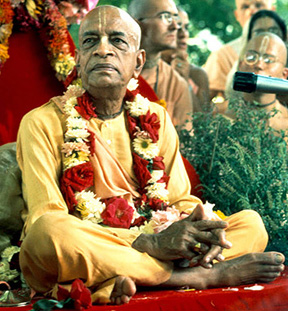
- Born Abhay Charan De (1st September 1896 in Calcutta), was an Indian spiritual teacher and the founder of the ISKCON.
- He is especially respected as the world’s most prominent contemporary authority on bhakti-yoga, devotional service to the Supreme Person, Krishna, as taught by the ancient Vedic writings of India.
- Swami ji also established over a hundred temples and wrote several books, teaching the path of Bhakti Yoga to the world.
- In his later years, as a travelling Vaishnava monk, he became an influential communicator of Gaudiya Vaishnava sampradaya’s theology to India and specifically to the West through his leadership of ISKCON.
- Gaudiya Vaishnavism:
- It is a Vaishnava Hindu religious movement inspired by Chaitanya Mahaprabhu.
- Here, “Gaudiya” refers to the Gaura or Gauḍa region of Bengal with Vaishnavism meaning “the worship of Vishnu”.
- The focus of Gaudiya Vaishnavism is the devotional worship (known as bhakti-yoga) of Radha and Krishna, and their many divine incarnations as the supreme forms of God, Svayam Bhagavan.
- Most popularly, this worship takes the form of singing Radha and Krishna’s holy names, such as “Hare”, “Krishna” and “Rama”, most commonly in the form of the Hare Krishna (mantra) also known as kirtan and dancing along with it.
- It is a Vaishnava Hindu religious movement inspired by Chaitanya Mahaprabhu.

